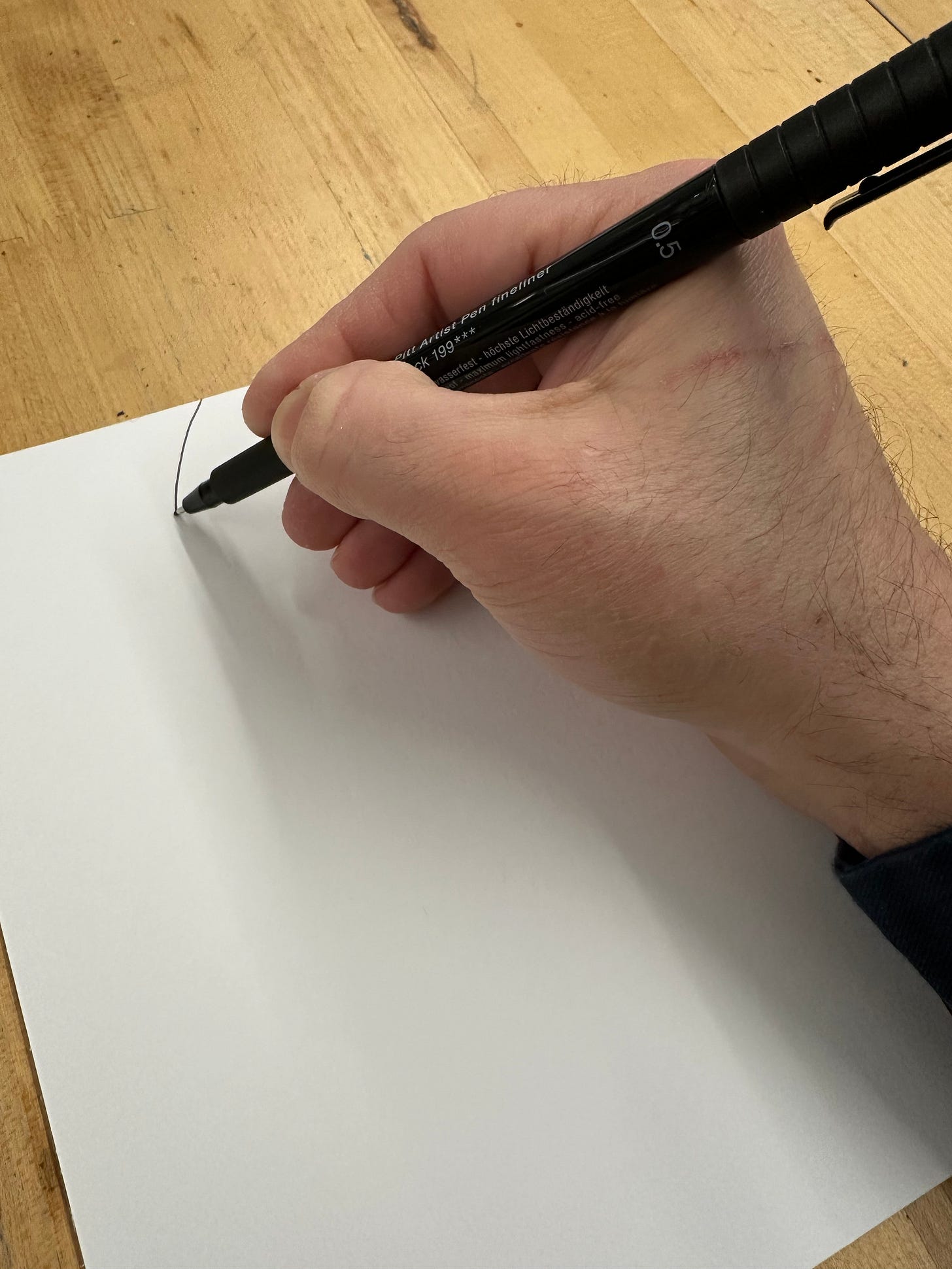Creative Spark Plug: Waveforms
How do you create when you can’t think of anything to do?
I often find it difficult to think of something to create when I sit down at my studio table. I pull out a blank piece of paper or open my journal to a blank page, and I feel like it’s not just the page that is blank as I struggle to have an idea.
But it’s not that I don’t have any ideas, it’s that I have too many. There are just so many possibilities swimming around in my head, and it’s hard to focus in on just one. The possibilities are truly endless, and I quickly become overwhelmed.
That’s when I like to turn to some exercises and challenges to help me get making and creating without much fuss and bother. Many of these activities are tried and true exercises that many artists and art teachers have used, and I have adopted and adapted them to use in my own art and within my teaching. Others are things that I personally developed through experimentation and exploration. The key to these exercises is that they provide a little but of structure by placing limitations on what and how I create.
As a teacher and a workshop instructor, I use these activities to challenge my students and to get them thinking creatively and to push them out of their comfort zones. As an artist I use these strategies to get me making and creating, and once I’m locked in and working, other ideas begin to pop up. If I can overcome the initial inertia and get my hand moving and my mind turning, the ideas begin to flow. Work always leads to work.
Waveforms
Here lately, my favorite challenge has been something that I call Waveforms. As far as I know, this is something that I developed a couple of years ago on my own simply by doodling and exploring while teaching.
I’ve always had an affinity for curvy, spiraling lines, and I have long been taken with the Art Nouveau artist Alphonse Mucha. I’ve poured over his work in the book The Art Nouveau Style Book of Alphonse Mucha for many, many hours, especially his designs for jewelry and dinnerware. I simply adore his curvy, swirling lines. I’m sure some of that admiration and inspiration has seeped into these waveforms, but I’ve been really digging how these wavy lines can come together to form random, but beautiful designs.
As with all of the challenges that I use, the waveform is a structured, yet open-ended exercise that follows a simple set of rules designed to get me making and creating. There is no end product in mind, and the activity can be taken in a lot of different directions.
Materials:
Like many of these challenges, the simplest of materials are needed, and I don’t need to haul out and set up a lot of materials. For this challenge, I only need paper and something to draw with. Any blank paper will do—drawing paper, sketch paper, construction paper, index cards. I often do this in my visual journal, sometimes on blank pages and sometimes on pages that already have paint or collage on them. Any writing or drawing implement will work—pencil, pen, or marker are all perfect for this.
Here’s how I make my waveforms:
In order to give myself some structure, I’ve developed several rules that get me going. I do give myself permission to bend and break the rules, and that can lead me to new ides and new ways of working.
Here are the rules:
Begin at an edge, and end at an edge. I begin drawing by placing my pen, pencil, or marker at an edge (top, bottom, or side) of my paper, and I draw a single line without lifting my hand until I get to another edge
Use very wavy, curvy lines. I like to use very elegant and curvy lines for these wave forms. I vary the curves so that I have big curves and little curves.
Subsequent waves have to touch previous waves in some places. I add a bunch more wavy lines, and when I do, I try to have the lines echo the previous line to some degree, and as I draw a line, I want it to touch the lines that I previously drew. I continue to draw lines until I feel like the space is filled up in an interesting way.
Those are the rules. They give me some limitations, and allow me to get started. Once I fill my space, I can do any number of things with the drawing.
I can leave it as it is. I can add color to it. I can add shading and value. I can paint it. There are just so many possibilities.
If you’d like to see this in action, check out the YouTube Video that I made a couple of years ago.
I’d love for you to try this and put your own spin on it. Please share your results. You can share them here in the comments, or you can share on social media (please tag me @emscottart, so that I can see!)
If you enjoyed this or you’ve been enjoying other things that I have been sharing, become a paid subscriber so that I can do more of this type of thing. Paid subscribers will get occasional, paid subscriber content as well as access to a monthly virtual meet up.
Thank you so much!
Happy creating!
Eric









I find your art and suggestions very accessible. Thank you!
I find this so relatable! Sometimes, I just want to draw something without really trying to overthink what I should draw. It's the reason why I'm also drawn to lineart. I love this suggestion and thank you for sharing! :)